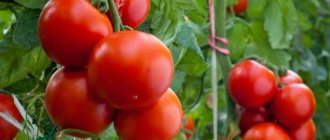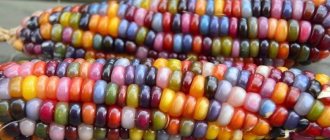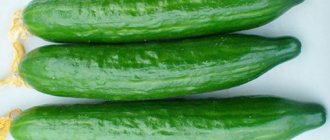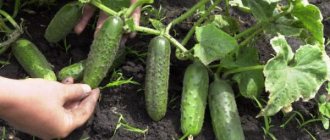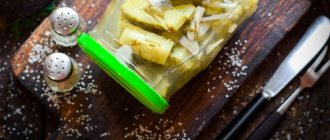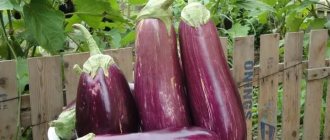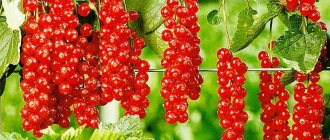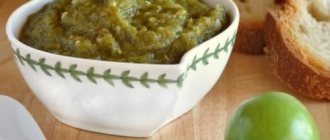Cucumber is one of the ten most popular vegetables around the world. Since ancient times, people have known that it has beneficial properties for the body. The fruits of this crop contain about 80% water, which improves kidney and heart function and has a beneficial effect on metabolism and appetite.
The cucumber came to us from the forest tropics of India. Therefore, to obtain a bountiful harvest, it is necessary to create conditions close to tropical ones: constant heat and humidity. There is a wide variety of cucumber varieties and hybrids. One of them is Stella F1.
Description of culture
The Stella F1 cucumber was bred by domestic breeders from the All-Russian Research Institute of Vegetable Growing. The vegetable is recommended to be grown in the Central, Central Black Earth, North Caucasus, North-Western, Northern, Volga-Vyatka regions, as well as in the Middle Volga region.
Distinctive features
Stella F1 has good resistance to root rot, powdery mildew and ascochyta blight. The fact that the vegetable is a hybrid makes the crop productive and hardy. The fruits of this plant have an excellent presentation. Cucumbers are grown both in greenhouse conditions and in open ground.
Composition, properties, benefits, calorie content
Since cucumber consists mainly of structured water, it is an excellent thirst quencher. The vegetable contains a large amount of minerals and vitamins A, B1, B2, C, E, PP, H.
In addition, it includes:
- iodine;
- magnesium;
- sodium;
- phosphorus;
- potassium;
- carotene;
- calcium;
- glucose;
- fructose;
- starch.
The vegetable also contains caffeic, ascorbic and folic acids.
Calorie content per 100 g of product is 15 kcal:
- proteins – 0.8;
- fats – 0.1;
- carbohydrates – 3.0.
Characteristics
Stella has long vines, many side shoots and a high main stem. Flowering type: female. The leaves are green, large, heart-shaped. The fruit ovary is cylindrical in shape.
Cucumber Stella F1 belongs to the mid-early hybrids. The first harvest is harvested 65 days after germination.
The type of pollination is parthenocarpic, that is, the plant pollinates independently, without the participation of insects.
From 1 sq. m. harvest up to 23 kg of crop. Ripe vegetables have a corrugated base and a cylindrical elongated shape. The surface is grooved, slightly bumpy. The length of the fruit is from 20 to 25 cm, the diameter is from 3.5 to 4.5 cm. One cucumber weighs approximately 270 g.
How to grow Stella cucumbers yourself
The soil for growing Stella F1 cucumbers should be light and rich in humus. Cucumbers are planted in the same place once every 5 years. This makes the crop more resistant to disease.
Cucumbers develop well in the place where tomatoes, potatoes, peas and corn used to grow. These vegetables are grown both by seedlings and by direct sowing in the ground.
Planting by seed
Before sowing, careful preparation of not only the seeds, but also the soil is carried out. Since cucumber germinates well, most gardeners plant the seeds dry, but to be sure they are pre-treated.
The first step is to calibrate the seeds: even, large seeds without dark spots are selected for planting. Next, they are disinfected with the drug “Fitosporin”, following the instructions on the package. Potassium permanganate is also used to process grains. 1 g of potassium permanganate is stirred in 100 g of water. The seeds are placed in the solution for 20-30 minutes.
The next stage is germination. The grains are wrapped in damp cotton cloth and placed in a container, which is wrapped in plastic wrap and placed in a warm place with an air temperature of +22...+26°C. Seeds are germinated within 1-2 days.
In regions with cool climates, grains are hardened. To do this, the sprouted seed material is placed in a damp cloth and placed in the refrigerator for 3-4 days, after which it is planted in the ground.
On a note. There is seed material on sale that has already been processed by the manufacturer. This is indicated on the packaging. Such seeds do not require disinfection; they are sown dry.
Step-by-step instructions for planting seeds:
- Make planting holes or even grooves and lightly water them.
- Plant the grains to a depth of 1.5-2 cm. If the soil is loose and sandy, a maximum of 3 cm.
- Dry seeds are planted at a distance of 5-10 cm. Sprouted seed material is placed according to the scheme: 20-40 cm by 60-100 cm, 4-5 plants per 1 square. m.
- Place 2-3 seeds in one hole. Subsequently, the weakest shoots are removed.
Planting by seedlings
The seedling method produces a harvest 14 days earlier than direct sowing in the ground.
Before planting seedlings, the seeds are poured into a fabric bag and placed in a nutrient solution (1 teaspoon of nitrophoska and wood ash are mixed in 1 liter of water) for 12 hours. At the end of the specified time, the seeds are washed several times with clean water, placed on a damp gauze cloth and left for 2 days at a temperature of at least +20°C. 24 hours before planting, the grains are placed in the refrigerator at a temperature of +2...+3°C.
Sowing seeds for seedlings is carried out throughout April. To do this, use small containers up to 12 cm in height. Soil for these purposes can be purchased at a specialized store or prepared independently.
To prepare the mixture you will need:
- 1 part small sawdust;
- 2 parts humus;
- 2 parts peat.
In 10 kg of composition mix 1.2 tbsp. l. nitrophoska and 2 tbsp. l. wood ash. All this is thoroughly mixed and distributed into containers. Plant 1 seed in one pot with prepared soil and lightly moisten it. When two true leaves appear, the seedlings will be ready to be transplanted to a permanent location.
Growing in stages and care
Stella cucumbers are watered systematically, but moderately. Before the crop blooms, moistening is carried out daily, and during the fruiting period - every 3 days. For this purpose, use slightly warm water.
For your information. Water the cucumbers in the morning or evening. Do not moisturize during the daytime, otherwise the leaves of the plants will get sunburn.
To obtain a good harvest of Stella F1, the crop is fed up to 5 times throughout the growing season:
- When the first full-fledged leaves appear, the first feeding with mullein is carried out. The solution is prepared in proportions of 2 kg of manure per 10 liters of water. Mix well and infuse for 2 weeks. After this, mullein is diluted with water in a ratio of 1 liter of fertilizer per 10 liters of water. Next, add 30 g of superphosphate, 10 g of urea, 10 g of potassium sulfate.
- The second fertilizer is applied a week after the first. Add 1 tbsp to 10 liters of water. l. fertilizers "Agricola-5". Feeding consumption: 3-4 liters per 1 sq. m.
- The third feeding is carried out 10 days after the previous one. Dissolve 2 tbsp in 10 liters of water. l. liquid fertilizer "Effecton-O". The crop is watered at the root at the rate of 3-4 liters per 1 square meter. m.
- Dilute 1 tbsp in 10 liters of water. l. nitrophoska and 2 tbsp. l. the drug "Agricola Vegeta". For 1 sq. m consume 5 liters of mixture.
- After 10 days, carry out the fifth feeding. Add 2 tbsp to 10 liters of water. l. complex fertilizer "Agricola for cucumbers". For 1 sq. m use 2.5-3 liters of the prepared mixture.
Features of cultivation and possible difficulties
The beds with the self-pollinating hybrid Stella F1 are systematically weeded. While the plants are still young, the soil is carefully loosened, at the same time removing weeds. In the future, the procedure is repeated once a week. For the crop, timely harvesting is important, since heavy fruits place a large load on the plants.
Diseases and pests
Since the Stella cucumber is a hybrid, the crop has good disease resistance, but there is still a small risk. In such cases, special preparations are used that protect plants from diseases and pests. When using products, it is important to follow the dosage so as not to harm the crop.
The most common diseases include:
- White rot. This is a white viscous consistency, due to which the fruits and the bush itself rot. The culture is treated by removing the affected parts of the plant and treating it with a solution (10 g of urea, copper sulfate, zinc sulfate per 2 liters of water).
- Powdery mildew . The disease is manifested by the presence of white spots on the leaves, and subsequently on the rest of the plant. The leaves begin to dry out and fruiting stops. The affected parts are removed, and the bush itself is treated with fungicides (10 g of the drug per 5 liters of water). If the disease has severely damaged the plant, it is destroyed.
- Downy mildew. The leaves become covered with small yellow spots and dry out. Subsequently, the disease spreads to the entire plant. Watering and fertilizing are stopped for 3-4 days, the plants are treated with “Polycarbacin” (10 g of the drug per 5 liters of water).
- Cladosporiosis. Bushes and fruits become covered with brown ulcers. To combat the disease, stop moistening the crop for 5 days and treat the plants with Fundazol (10 g of the drug per 10 liters of water). Infected parts of bushes are removed.
On a note. It is necessary to fight the disease in the first stages of its development, otherwise the crop will die. There is also a risk of infection of neighboring plants.
Often, during the cultivation process, cucumbers are also attacked by pests. Insects mainly attack plants during the fruiting period.
The most common pests:
- Spider mite. It is located under the leaves, where it leaves its web. This parasite spreads various infections and eats foliage. To combat it, the back side of the leaves is sprayed with a soap solution (200 g of grated laundry soap per 10 liters of water).
- Whitefly . This is a small white midge that sucks the sap from plants and leaves behind sooty fungus and wilted foliage. To combat it, use garlic infusion (200 g of grated garlic is stirred in 10 liters of water and allowed to brew for a day), which is sprayed over the entire plant.
- Aphid. These are small green bugs that settle on greenery in whole colonies and eat it, which leads to wilting of the leaves. The pest multiplies very quickly. Aphids are destroyed using an ash solution (200 g of wood ash and 100 g of soap are mixed in 10 liters of water).
Once pests are identified, they are destroyed immediately, since insects spread very quickly and spread to neighboring plants.
Cucumber care
To get a high yield, it is necessary to organize proper care for this plant crop.
Soil moistening
Before flowering begins, watering is carried out once every 5–7 days, at the rate of 3–6 liters per 1 m². From the moment of flowering, watering is increased, it is carried out every 2-3 days. At the same time, 6–12 liters are consumed per 1 m². The water temperature for irrigation should be warm and within +20…+25°C. Cold water can negatively affect the crop. Watering itself must be done at the root. Moisturizing should be done in the evening or morning. After irrigation, the soil should be loosened. During this process, weeds should also be removed.
Fertilizer
To get a good harvest, you need to fertilize 5 times during the entire growing season. For this purpose, organic matter and mineral fertilizers are used. The first application of fertilizers is carried out at the initial stage of color appearance. For feeding, use the following solution: mix 250 ml of rotted mullein in 10 liters of water, as well as 1 teaspoon each of urea, potassium sulfate and superphosphate.
Mullein can be replaced with sodium humate (1 tbsp). During the fruiting period, fertilizing is carried out 4 times. At the beginning of fruit formation, use a solution - take 1 tbsp per 10 liters of water. l nitrophoska and 250 ml of rotted chicken droppings.
We recommend that you learn about feeding cucumbers during flowering and fruiting.
For all other fertilizers, use the following composition: one teaspoon of potassium sulfate and 0.5 liters of rotted mullein are dissolved in ten liters of water. The break between feedings is 14–15 days. For 1 m² of planting it takes about 5 liters of this solution. Rotted chicken droppings or manure can be replaced with humic fertilizers such as “Breadwinner”, “Fertility”, “Ideal” or sodium humate.
Control of plant diseases and pests
The Stella cucumber variety is a hybrid, so it is quite resistant to diseases. However, under unfavorable conditions and violation of agricultural cultivation techniques, various diseases may arise, as well as some pests, which can significantly reduce the yield. Therefore, when caring for this plant crop, it is important to promptly identify the problem and take appropriate measures to eliminate it.
Did you know? Cucumber comes from India. Its name in Sanskrit is the name of a rajah who had 60 thousand children.
Let's look at the main diseases of cucumbers that may occur:
- Powdery mildew. Signs of the disease are a whitish coating on the leaves, which then spreads to all parts of the plant. The leaves begin to dry, and the development and growth of the bush stops. To eliminate the disease, treatments are carried out with fungicidal preparations such as Trichodermin, Glyokladin, Fitosporin-M. Specimens that are too affected by powdery mildew should be disposed of.
- Cladosporiosis. In this case, brown sores appear on the plant crop, including fruits. To cope with such a disease, it is necessary to stop watering the bushes, trim the affected areas, and also be sure to treat them with the drug “Fundazol”.
- White rot. It appears as a whitish sticky coating on the bush and fruits. The plant begins to rot. To eliminate the problem, the affected areas of the plant should be removed. It is necessary to treat with a solution - dilute 10 g of urea, zinc sulfate and copper sulfate in 2 liters of water.
- Downy mildew. Signs of the disease are yellow spots on the leaves, which gradually begin to dry out and die. In this case, moisturizing and fertilizing are completely stopped for 4 days, and treatments are carried out with Polycarbacin.
- Whitefly. The whitish midge feeds on the sap of the plant, causing the leaves to wilt. To cope with this insect, plantings are sprayed with garlic infusion at the rate of 150 g of chopped garlic per 1 liter of liquid. You can use the chemical drug "Inta-Vir".
- Aphid. Small, greenish beetles that also feed on plant sap, eating leaves. They multiply quickly and can cause serious harm. Treatments with a solution of wood ash help against aphids. For 5 liters of water take 100 g of ash and 40 g of crushed laundry soap (for better adhesion). The drugs “Confidor” or “Commander” give a good effect.
- Spider mites. These small pests feed on leaves. They can be identified by the presence of the finest cobwebs. To eliminate the pest, treat with a soap solution, which is prepared at the rate of 1 tbsp of soap powder per 1 liter of liquid. The drug “Kleschevit” helps against these insects.
The most common plant pests:
If you regularly inspect plants and take appropriate measures at the first signs of disease or the appearance of insect pests, then such difficulties can be easily dealt with and the crop can be saved.
Advantages and disadvantages of the variety
Summer residents like the Stella F1 cucumber due to its large number of positive qualities.
The advantages of this hybrid include:
- stable high yield;
- excellent taste;
- good presentation;
- Possibility of growing both in open ground and in a greenhouse.
- strong immunity;
- long fruiting;
- self-pollination;
- good seed germination;
- transportability.
The culture has few disadvantages. These include:
- high demands on fertilizing;
- inability to use seeds from your harvest.
Stella has a lot of advantages. Against their background, minor shortcomings are invisible, which is why many vegetable growers prefer this particular hybrid.
Harvest and storage
You can harvest cucumbers of the Stella variety from the second half of June until the end of August, as they ripen, when the greens grow to the desired size. They are great for fresh consumption. Cucumbers can also be used for preservation (in pieces).
Fresh vegetables are stored for no more than 2 days in room conditions, then they gradually begin to wither. They can stay in the refrigerator in the vegetable compartment or in a bag with air holes for 5 days. In the cellar, when stored in boxes and at a temperature of +6...+8°C, storage can be carried out for up to 10 days. It is recommended to grow cucumbers of the Stella variety in a greenhouse in different ways (from seeds or seedlings). The fruits are best consumed fresh. Caring for the plant is not difficult, and the yield and taste of the fruit are at a high level.
Reviews
Experienced summer residents evaluate the Stella hybrid positively. Cucumbers are actively grown in the vast majority of regions of the country. The opinions of some vegetable growers are further in our article.
Mikhail, Cheboksary: “I have been growing hybrid cucumbers for 7 years in a row. Most of all I liked Stella F1. The plant is self-pollinating, which is good for growing crops in greenhouse conditions. The fruits really grow like in the photo of the package with seeds - long and weighty, and most importantly - tasty. Last year I fed the plant, as they say, “from the heart,” and as a result there was so much harvest that I didn’t even know what to do with it. This hybrid is probably just right for implementation.”
Anna, Krasnodar: “In my own experience, I tried to grow many different hybrid cucumbers, until my neighbors recommended Stella F1 to me. Now I only plant this cucumber for salads, and always through seedlings. Fruiting is long, until frost. The vegetables are very tasty and have thin skin. Even for the winter I can preserve salads with the addition of these cucumbers.”
